Used Kitesurfing Equipment: A Comprehensive Guide
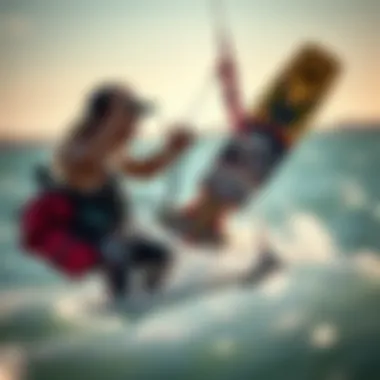
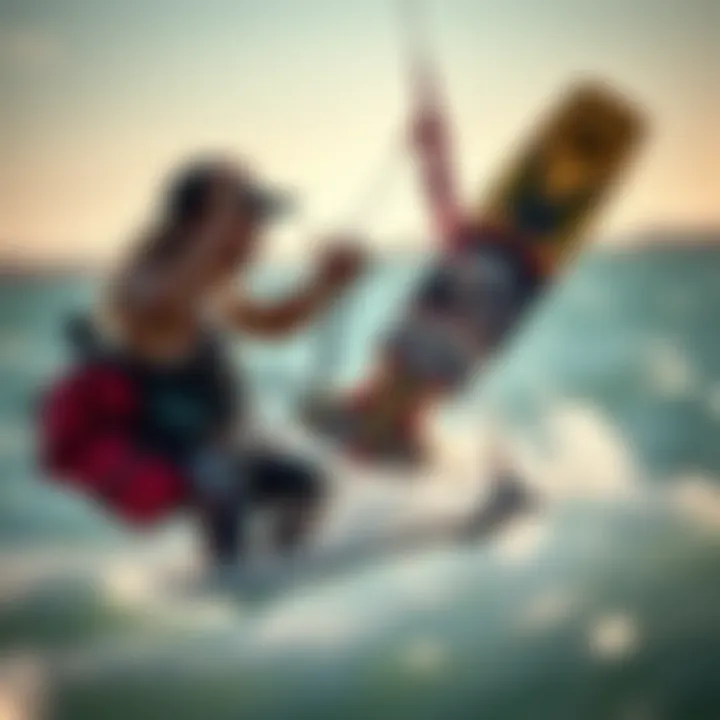
Intro
Kitesurfing is more than just a sport; it’s an exhilarating dance with wind and water that can instantly transform a mundane day into an adventure. Whether you’re skimming the surface of a glassy sea or performing tricks high in the sky, having the right equipment can make or break your experience. While new gear often comes attached with a hefty price tag, the second-hand market is brimming with opportunities. It can be tempting to dive into the world of used kitesurfing equipment, but it’s crucial to do your homework.
In this guide, we will explore the ins and outs of purchasing used gear. We’ll look at the various types of equipment available, from kites to boards and harnesses, and discuss the benefits and risks related to buying second-hand. Additionally, we will share essential maintenance tips to keep your gear in top condition. Whether you’re just getting into kiteboarding or you're a seasoned rider looking for a deal, understanding this landscape can ensure you make informed choices.
The goal here is to provide thorough insights, so you can maximize your kitesurfing adventure while keeping your wallet intact.
Gear and Equipment
Understanding Kitesurfing Essentials
Before you start searching for used gear, it's vital to know what you need. Kitesurfing requires several key components, each playing a definitive role in your performance and safety on the water. Let's break down some essentials:
- Kite: The engine of your kitesurfing experience. This comes in different sizes and styles designed for various conditions.
- Board: A stable platform for riding. Different shapes cater to different riding styles, like freestyle or wave riding.
- Harness: Keeps the kite's pull connected to your body, allowing you to ride comfortably.
- Lines and Bar: These components are your control system, connecting the kite to you and allowing for manipulation during your ride.
"Choosing the right kite for your skill level and riding style can greatly affect your enjoyment and progression as a kitesurfer."
Essential Kiteboarding Gear for Beginners
If you're just starting, focus on basic equipment that balances performance and ease of use. Look for reputable brands known for durability and safety features. As a beginner, you might want to consider:
- Depower Kites: They are safer for new riders since they offer a range of control.
- Larger Boards: These provide better stability and make it easier to learn.
- Adjustable Harnesses: To ensure comfort as you grow in your abilities.
Advanced Equipment for Experienced Riders
Once you’ve mastered the basics, you might look for equipment that offers more performance. This can include:
- High-Performance Kites: Designed for specialized riding, providing faster speeds or higher jumps.
- Specific Board Designs: Tailored for tricks or waves, enhancing your riding experience.
- Custom Harnesses: Offering tailored fit and additional features for comfort during high-performance rides.
Understanding what these pieces of equipment can do and how they fit your style will help you make better purchasing decisions in the used gear market.
Prologue to Used Kitesurfing Equipment
Kitesurfing captures the thrill of the wind and waves, making it a beloved sport among thrill-seekers and beach enthusiasts. However, for newcomers and seasoned pros alike, navigating the waters of kitesurfing can be as tricky as mastering the sport itself. This is where used kitesurfing equipment comes into play, offering a practical solution for those looking to dive into the kiteboarding adventure without breaking the bank.
Opting for second-hand gear not only helps in saving significant cash but also promotes sustainability. Many people find themselves dazzled by the allure of brand-new equipment, but what’s often overlooked is the vast treasure trove of quality used gear waiting for the right buyer. Not only can one snag a great deal, but they also contribute to a more circular economy, minimizing waste in a world teeming with consumerism.
When considering the purchase of used kitesurfing equipment, a few vital elements come to focus. First, it's crucial to understand the various types of gear available, from kites to boards, and control systems. Each item has its lifespan and usage characteristics. It’s also important to weigh the advantages against potential drawbacks, such as wear and tear or a lack of warranty. Knowledge is power in making decisions that align both with budget and performance needs.
In this article, we’ll unpack the intricacies surrounding used kitesurfing gear, providing insights and practical advice to ensure you are well-equipped for your next adventure. Whether you are a newbie eager to catch your first wave, or an experienced rider looking to refine your setup, understanding the landscape of used kitesurfing equipment is essential. Let’s dive deeper into the gear that will help you soar through the skies and ride the surf with confidence.
Understanding the Kitesurfing Gear Landscape
Kitesurfing isn't just about feeling the wind in your hair; it's about understanding the tools that help you harness that wind to glide over masses of water. The kitesurfing gear landscape is intricate, with countless options out there. As you explore used equipment, it's vital to wrap your head around the types of gear available and what they do.
Familiarizing oneself with various kites, boards, and control systems sets the groundwork for making informed decisions when buying second-hand. Knowing what each piece of equipment offers can prevent poor choices that may cost you more than a few dollars. This deeper understanding might even gear you toward your perfect setup, aligning your style of riding with what lies beneath your feet.
Kites: Types and Characteristics
Foil Kites
Foil kites, known for their light weight and easy packing capabilities, are a savvy choice for those looking to up their game. The key characteristic is their design; flexible wings made of fabric that can be folded away conveniently. This makes them especially appealing for kiteboarding adventurers on the go. They excel in efficiency and provide a smoother ride, particularly in lighter winds.
However, they don’t perform as well in strong winds against others types, making proper conditions crucial. The unique feature of foil kites is their ability to stay up in the air even in light breezes, which can be ideal for beginners wanting to improve their skills without getting a workout trying to keep their kite in the air.
Hybrid Kites
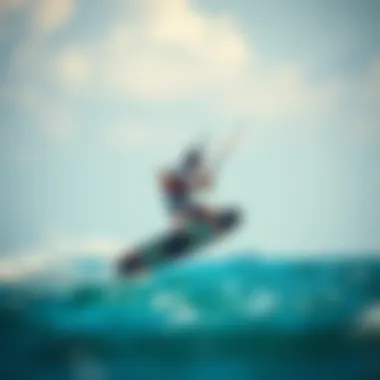
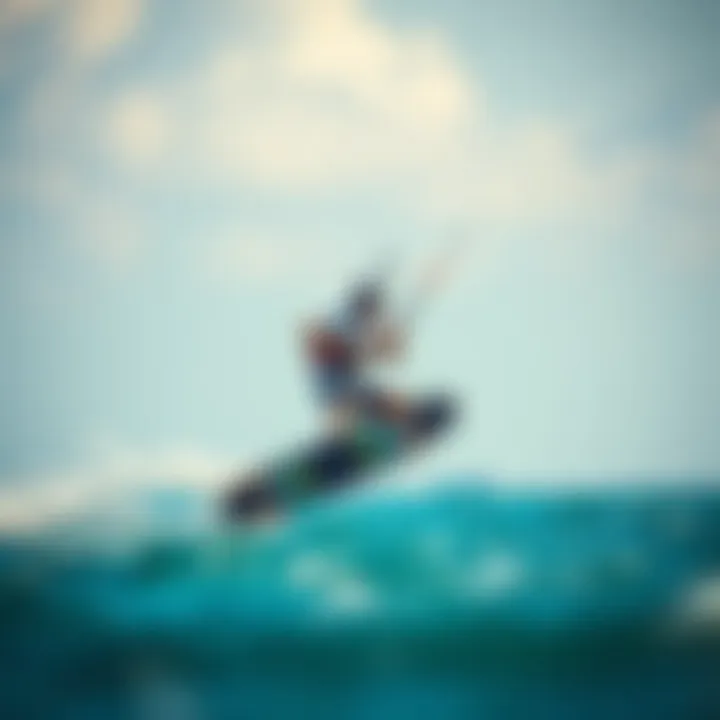
Hybrid kites meld the characteristics of various designs into a single versatile package. The hallmark of hybrid kites is their versatility; these can handle a wide range of conditions and styles, making them suitable for different riders. If you encounter fluctuating winds or plan to dabble in multiple kitesurfing styles, choosing a hybrid kite makes sense.
One unique aspect is their semi-rigid structure, giving a blend of performance and stability. They also perform reasonably well in both high and low winds. However, some users find hybrids may not excel in a specific area as much as dedicated kites, meaning riders must strike a balance concerning performance.
Leading Edge Inflatable Kites
Leading edge inflatable kites, commonly referred to as LEIs, are by far the most widely used. Their key characteristic lies in their inflatable bladders that give them an easy setup and decreased chance of damage from harsh water landings. This makes them a popular choice for beginners as well as seasoned riders, combining ease of use with robust durability.
What sets these kites apart is their iconic shape and large surface area that captures the wind, allowing for powerful performance. However, be mindful of the fact that they can be heavier and may require a bit of more effort to control in gusty situations. It’s also essential to inspect these kites for leaks or damage when buying used.
Boards: Function and Style
Directional Boards
Directional boards, designed primarily for surf-style riding, excel in wave conditions. The essence of these boards lies in their shape; long and tapered, resembling a surfboard. This allows for more streamlined cruising and effective carving through wave faces. If you dream of riding the perfect wave, directional boards can truly elevate your kitesurfing experience.
However, they do require some skill to maneuver effectively. Beginners might find themselves at a slight disadvantage due to the board's orientation; they aren't as forgiving when it comes to balance. The distinctiveness of directional boards lies in the subtle interactions between rider and environment.
Twintip Boards
Twintip boards are a staple among most kitesurfers, especially those into tricks and jumps. The unique characteristic of these boards is their symmetrical design, allowing riders to switch directions effortlessly. This feature also makes them suitable for a wide variety of conditions. In terms of ease of use, they cater to those learning the ins and outs of kitesurfing, as they can be ridden with any side facing the direction of travel.
One drawback is the limited performance in waves compared to directional boards. However, if you enjoy freestyle riding, consider the twintip board your best friend in the kitesurfing ecosystem.
Control Systems: Essential Components
Bar and Lines Setup
Understanding bar and lines setup is fundamental for successful kitesurfing. This component is essentially the bridge between the rider and the kite. A well-set bar and line arrangement empowers you to control your kite's movements accurately. Look for a setup that offers a straightforward configuration that fits comfortably in your hands.
One unique aspect to note is line length; shorter lines provide more reaction and control but can feel twitchy, while longer lines offer a more stable ride but may lack immediate responsiveness. Ensure to test the setup if going for a used model, as wear and tear can seriously affect performance.
Safety Systems
Safety systems are interwoven with the overall experience of kitesurfing. Their importance cannot be overstated as they play a crucial role in your well-being. Most setups include quick-release mechanisms that allow you to detach from the kite in emergencies. This characteristic makes them essential during reckless gusts or unforeseen mishaps.
One unique feature of modern safety systems is the safety leash. This keeps the kite's power manageable while ensuring it doesn't become a runaway sail. However, look for any signs of wear when assessing used gear. Depending on their condition, an older system may not function as intended in critical moments, adding a layer of risk.
Understanding the intricacies of kitesurfing equipment empowers you to make educated choices, ensuring that each time you hit the water, you’re well-prepared to enjoy what the elements offer.
Advantages of Purchasing Used Equipment
When stepping into the diverse world of kitesurfing, one of the decisions facing newcomers and seasoned athletes alike is whether to opt for new or used equipment. Choosing used kitesurfing gear has become increasingly popular, and for good reason. Understanding the advantages of purchasing this second-hand equipment can make a world of difference in your kitesurfing journey.
Cost-Effectiveness
A striking benefit of used kitesurfing equipment is its significant cost-effectiveness. Given the high price tags that typically accompany new gear, opting for second-hand options can lead to substantial savings. Saving a few bucks here and there can allow you to channel your funds into lessons, upgrades, or even extra trips to the beach.
Even so, don’t just dive in without a second thought. It’s important to compare prices carefully, ensuring that the used gear you eye isn’t just an old boat anchor. Here are some key points to consider:
- Initial Savings: Generally, you might find that used kitesurfing boards or kites can cost up to 50% less than new ones, depending on their condition.
- Frequent Changes in Technology: Kitesurfing technology evolves rapidly, but older models often remain perfectly usable. This allows riders to enjoy solid performance minus the bleeding-edge price tag.
- Room for Upgrades: The cash saved from purchasing used gear can free up funds for future upgrades, making it easier to improve your kitesurfing setup over time.
Environmental Considerations
In today’s world, being eco-conscious is more important than ever. Buying used kitesurfing equipment aligns well with sustainable practices. Every time you choose second-hand gear, you’re helping to reduce waste and the demand for new materials. Here’s why that matters:
- Less Waste: The outdoor sports industry generates a lot of waste through the production of new gear. Opting for used equipment helps keep these perfectly functional items out of landfills.
- Resource Conservation: By purchasing used, you’re reducing the need for manufacturing new products, which often contributes to resource depletion and pollution.
- Encouraging a Sharing Economy: There’s a certain camaraderie among kitesurfers—those who have been in the sport for a while know the value of passing on quality gear. Supporting the used market fosters community and connectivity among enthusiasts.
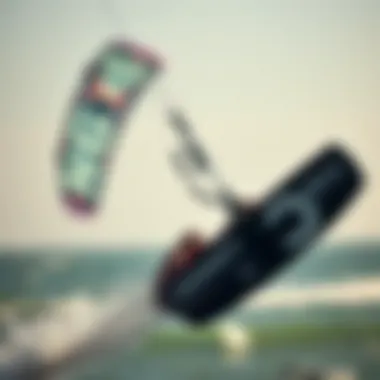
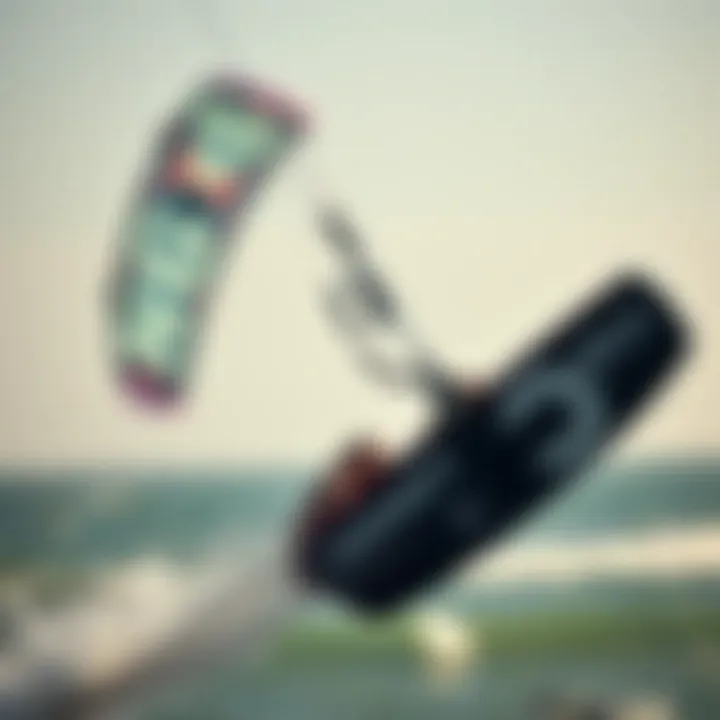
Drawbacks of Used Kitesurfing Equipment
When considering the purchase of used kitesurfing gear, it's vital to recognize the potential pitfalls that can accompany it. While the allure of savings is undeniable, various drawbacks must be taken into account. These factors can influence not just your wallet, but also your safety and the overall quality of your kitesurfing experience. Let’s take a closer look at two significant drawbacks: potential wear and tear, and lack of warranty.
Potential Wear and Tear
Used kitesurfing equipment often comes with a story, a history that reflects both adventures and mishaps. With any second-hand gear, the age and prior usage can leave marks, scrapes, and signs of fatigue—think of it like an old car with a few dings but still running. In the case of kites, wear and tear can lead to a range of issues, from tiny leaks that compromise buoyancy to frayed lines that can snap during use.
- Kite Condition: Inspect the trailing edge, leading edge, and seams closely for any visible wear. A kite that’s been well taken care of might look close to new, while a neglected one may raise red flags.
- Board Integrity: Check for scratches, dents, or delamination on the boards, as these can significantly impact performance and durability.
- Control Systems: Look for any wear on the bar and lines, ensuring they are not frayed or excessively worn. A compromised line can turn a thrilling ride into a dangerous spill.
Even though you might score a fantastic deal, the cost of repairs or the risk of malfunction can easily outweigh initial savings. Understand what you’re getting into with used gear, as it may take more than just a quick glance to ensure you're not buying a headache.
Lack of Warranty
Buying used kitesurfing equipment usually means waving goodbye to warranties and guarantees. New gear often comes with a safety net; you can return it, exchange it, or have it repaired if something goes awry. When you step into the second-hand market, however, those protections dissolve.
Without a warranty, you take on all the risks associated with any hidden flaws that may not surface until you hit the water. Imagine heading down to the beach, eager to show off your latest find, only for the kite to unexpectedly collapse mid-flight.
It's crucial to ask questions about the gear's history — how many sessions has it seen? Did the last owner experience any problems? A verbal assurance might feel comforting, but it holds little weight when the waves are rolling and you’re relying on that gear.
Things to consider when evaluating warranty:
- Original Purchase: Sometimes the original owner will provide documentation of the warranty, but most warranties don’t transfer with sale.
- Manufacturer Support: Research the manufacturer’s policy for repairs or support, which might give insight into what you can expect if something goes wrong.
Key Factors to Consider Before Buying Used Gear
When diving into the world of used kitesurfing equipment, a few key factors can make or break your experience. Understanding these elements can lead to better decisions and ultimately improve your time on the water. Whether you're someone just starting out or a seasoned kiteboarder looking for a deal, considering the right aspects before making a purchase is critical.
Assessing Condition
Before anything else, you've got to take a close look at the condition of the equipment. The wear and tear on used gear can vary immensely, and recognizing the state of any specific item is essential.
- Visual Examination: Check for any evident dings, scratches, or deformations. Make sure the fabric isn’t frayed or torn. A kite with multiple repairs might work fine, but if re-stitched poorly, it might fail at a critical moment.
- Air and Water Tests: If it’s a kite, inflate it to see if it holds air. Take it out for a test if you can, and feel how it flies. For a board, ensure there are no water leaks—sinking can be a real bummer on a ride.
- Safety Systems: Without proper functioning safety mechanisms—like quick-release mechanisms on the bar—you might end up in sticky situations. Check that everything works as intended.
Keeping these conditions in mind can save you a heap of trouble down the line, especially when you’re on the water and your life depends on the reliability of your gear.
Compatibility with Your Skill Level
The learning curve in kitesurfing can be steep, and selecting gear that matches your skill level is just as important as the condition of that gear. Using too advanced equipment might throw you overboard more than necessary!
- Kite Size and Type: Beginners often do well with larger kites, which provide more lift and easier handling in light winds. However, as you progress, a smaller kite could be more suitable for higher winds. Therefore, consider your current skill level and future aspirations when selecting gear.
- Board Style: Just like with kites, the type of board you ride matters. Twintip boards are often favored by beginners because they allow for a more forgiving ride as you learn to edge and maneuver. On the other hand, directional boards tend to require more experience to truly harness their potential.
- Feedback from Other Riders: Don't hesitate to seek out advice. Join local forums, Reddit threads, or social media groups where like-minded individuals are happy to share their experiences about gear that suited their progression.
Evaluating compatibility with your abilities can enhance your learning curve. When you feel comfortable with your setup, you are more likely to enjoy your time in the water.
"Choosing the right used gear is a fine balance. It’s all about balancing quality, compatibility, and your budget. A smart purchase can turn novice struggles into thrilling rides."
Where to Find Used Kitesurfing Equipment
Finding the right used kitesurfing equipment can feel like searching for a needle in a haystack. However, knowing where to look is half the battle. In this article, we will dive into two major arenas for sourcing your kitesurfing gear: online marketplaces and local shops or trade shows. Each option offers distinct advantages, catering to various preferences and comfort levels.
Online Marketplaces
The internet has vastly transformed the way we buy and sell used equipment. Online marketplaces are a treasure trove of opportunities for finding kitesurfing gear at reasonable prices. Platforms like eBay, Craigslist, and Facebook Marketplace enable users to connect with local sellers and even negotiate prices. Here's how to make the most out of them:
- Variety: The selection can be enormous. From kites and boards to harnesses and safety gear, you can often find it all in one place.
- Accessibility: These platforms are available 24/7. You can search for items at your own convenience without the restrictions of shop hours.
- Comparative Shopping: It's easy to browse multiple listings side by side, giving you a clearer idea of market prices.
- User Reviews and Ratings: Many marketplaces have systems in place for buyers to provide feedback about sellers, enhancing trust and transparency.
That said, caution is advised. Make sure to closely examine the seller's history and read any reviews before making a purchase. Ask for additional pictures to inspect the item closely, as descriptions might not tell the whole story.
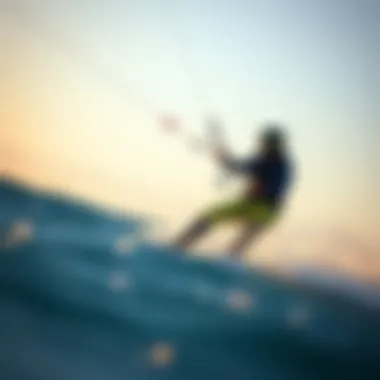
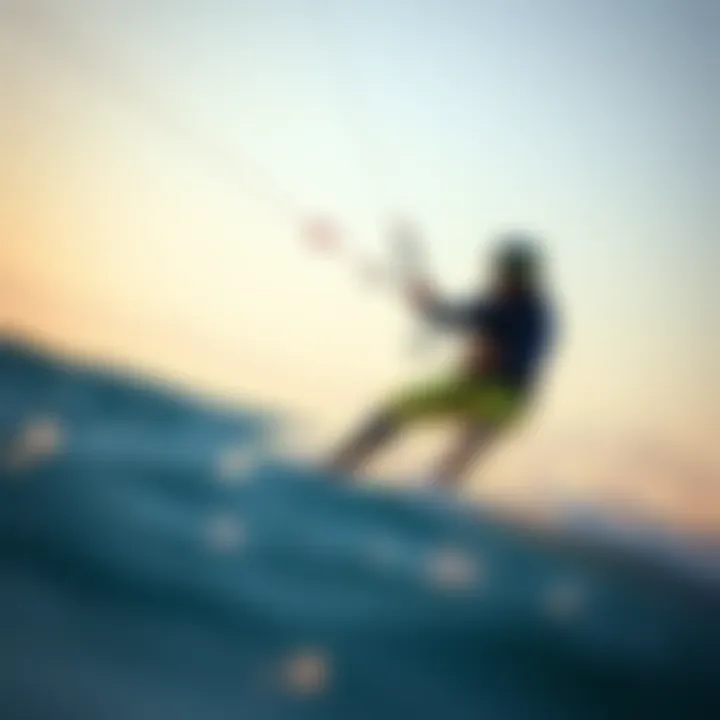
Local Shops and Trade Shows
While online options have their perks, there's something irreplaceable about shopping in person. Local shops and trade shows offer more than just products; they deliver experiences. Visiting a shop can allow you to communicate directly with the experts, who often have practical knowledge and insights into the gear. Here are some benefits:
- Physical Inspection: You can inspect the equipment thoroughly before buying. Look for signs of wear, previous repairs, and overall suitability for your wants and needs.
- Expert Advice: Many shop owners or staff are seasoned kitesurfers themselves. Their advice can be invaluable, ensuring you select equipment that fits your skill level and style.
- Instant Gratification: Unlike online shopping, when you buy gear in-store, you can often take it home right away and hit the water.
Furthermore, trade shows specifically focus on watersports gear and are an excellent way to connect with multiple brands and sellers under one big roof. These events frequently showcase the latest products and provide an opportunity to snag a great deal on last season’s models.
Inspecting Used Kitesurfing Gear
When considering second-hand kitesurfing equipment, inspecting the gear plays a pivotal role in ensuring both safety and performance. A thorough evaluation not only protects your investment but also enhances your overall kitesurfing experience. By diving deep into inspection techniques and functional tests, you’ll be well-prepared to identify gear that is worth any penny spent.
Visual Inspection Techniques
Visual inspections are your first line of defense against worn-out or damaged equipment. As the saying goes, “a stitch in time saves nine.” Taking the time to inspect can save you from future headaches. Here are some techniques and elements to focus on during your visual check:
- Kite Canopy: Check for any tears, holes, or frayed seams on the canopy. Minor damage can often be repaired, but extensive wear might compromise performance. Look closely, as sometimes damage isn’t immediately visible until you inspect closely.
- Leading Edge: Inspect the leading edge for inflation issues and punctures. Any sign of compromise in this area can drastically affect the kite’s performance and stability.
- Bridle Lines: Ensure that the bridle lines are intact and not showing signs of wear like fraying. Faulty lines can lead to improper kite handling.
- Board Surface: Examine the board for dents or scratches that could affect its hydrodynamics. These blemishes may not seem like a big deal, but they can change how the board rides in the water.
- Fins and Straps: Check the condition of the fins and bindings. Loose screws, cracked fins, or worn straps can be significant safety hazards.
In essence, every little detail matters. If you notice something that raises a red flag, always consider if that piece of gear is truly worth your hard-earned cash.
Functional Tests to Perform
Once the visual inspection is done and you’re feeling good about that, moving on to functional tests is crucial. These tests will help you see if the gear will operate as intended when it's whipped on the water. Here’s how to test the essential components:
- Kite Inflation Test: Inflate the kite fully to ensure it holds air properly. If there are leaks, no amount of stitching will fix a kite that deflates mid-ride.
- Line Tension Check: Unroll and pull on the lines to check for any stretch or weak spots. This will assure you that they are ready to handle the forces they will encounter.
- Kite Control: If possible, perform a small water test. Launch the kite in safe conditions to check its responsiveness. See if it flies smoothly without any hesitations or erratic movements.
- Board Flex Test: Stand on the board and bend it slightly. It should not feel excessively flexible or cracked. Pay attention to how it feels underfoot; that can tell you a lot about its performance capabilities.
Remember, functional tests can reveal a lot that a visual check might miss. It’s like taste-testing a dish before serving it – you’d want to know that it’s good enough to satiate your cravings!
Through diligent inspection and functionality testing, you can make grounded decisions when purchasing used kitesurfing gear. After all, ensuring you have quality equipment is crucial for an exhilarating experience out on the water. Proper attention to detail bridges the gap between a thrilling session and an unforeseen mishap.
Caring for Used Kitesurfing Equipment
Caring for used kitesurfing equipment is a key aspect that often gets sidelined by both novices and veterans in the sport. Proper care not only extends the life of your gear but also enhances your overall kitesurfing experience. Investing time in maintenance can ensure that your equipment remains in optimal condition, promoting safety and performance on the water. Let's dive deeper into the crucial elements of looking after your used gear and some benefits that come with it.
Proper Storage Practices
When it comes to storing your kitesurfing gear, choosing the right environment is essential. Improper storage can lead to damage from humidity, sun exposure, or even pests. Here are some effective practices to consider:
- Dry Before Storing: Always ensure your kites and boards are completely dry before putting them away. Moisture can lead to mildew and rot.
- Use a Storage Bag: Invest in a good quality bag specifically designed for kites and boards. This helps protect them from scratches and environmental factors.
- Cool, Dark Place: Store your equipment in a cool, shady area, away from direct sunlight, which can degrade materials over time.
"Just like a trusty pair of boots, kitesurfing gear deserves a little TLC to keep it kicking!"
Maintenance and Repairs
Regular maintenance and timely repairs can save you a lot of headaches and money in the long run. Routine checks and upkeep make sure that any wear and tear is addressed before it escalates. Here are some important maintenance tips:
- Inspect Regularly: Examine your gear after each session. Look for any signs of fraying, tears, or damage, especially in the lines and seams of your kites.
- Cleaning: Wash your gear with fresh water after every session to remove sand and salt, which can cause corrosion. Use a soft cloth to wipe down surfaces gently.
- Repairs: Don’t delay fixing minor issues. Small tears can be patched up easily if caught early. Consider using repair kits that are often available from manufacturers.
- Check Components: Ensure that the control bar and lines are properly tensioned and free from tangles. This not only enhances performance but also ensures your safety when riding.
Maintaining and caring for your used kitesurfing equipment may come off as a chore, but in the grand scheme of things, it is a reflection of your commitment to the sport. When your gear is well-maintained, you can enjoy your adventures on the water with more confidence and less stress. The peace of mind that comes from knowing your equipment is ready for action is truly priceless.
The End: Making Informed Decisions in Kitesurfing Equipment
Navigating the waters of kitesurfing gear, particularly when it comes to second-hand items, demands a savvy approach. This article has outlined various aspects of acquiring used kitesurfing equipment, from evaluating gear for wear and tear to understanding the unique qualities of different types of equipment.
As a kiteboarder or someone keen to join this thrilling sport, the importance of making informed choices cannot be overstated. You’re not just purchasing equipment; you’re investing in your own kitesurfing journey. Here are some essential considerations:
- Research Thoroughly: Before buying any used gear, invest time in knowing about the different types available. Knowledge about items like foil kites or twintip boards can tip the scale in your favor.
- Prioritize Quality: Just because something is used doesn’t mean it should be low quality. Inspect the materials and conditions carefully. Sometimes, the right piece could be just a bit worn but still very functional.
- Consider Your Skill Level: Don’t get dazzled by advanced gear when you’re just starting. Tailor your choices to match your current abilities. After all, a good experience often comes from the right fit between equipment and rider skill—nobody wants to bite off more than they can chew.
Furthermore, beneficial practices such as proper maintenance, regular checks for equipment damage, and understanding the algorithms that govern these water sports could elevate one’s experience greatly. After getting used gear, regular upkeep is essential; this doesn’t only prolong the lifespan of your kitesurfing equipment, but it also ensures safety on the water.
Ultimately, being well-informed helps in making decisions that balance both safety and thrill. Knowledge gained from inspections, understanding compatibility, and getting feedback from other kiteboarders can serve as a sturdy foundation for any purchase.
"The best decision is one made with full understanding and consideration of your options. Knowledge is the wind beneath your wings, or in this case, the force in your kite!"



